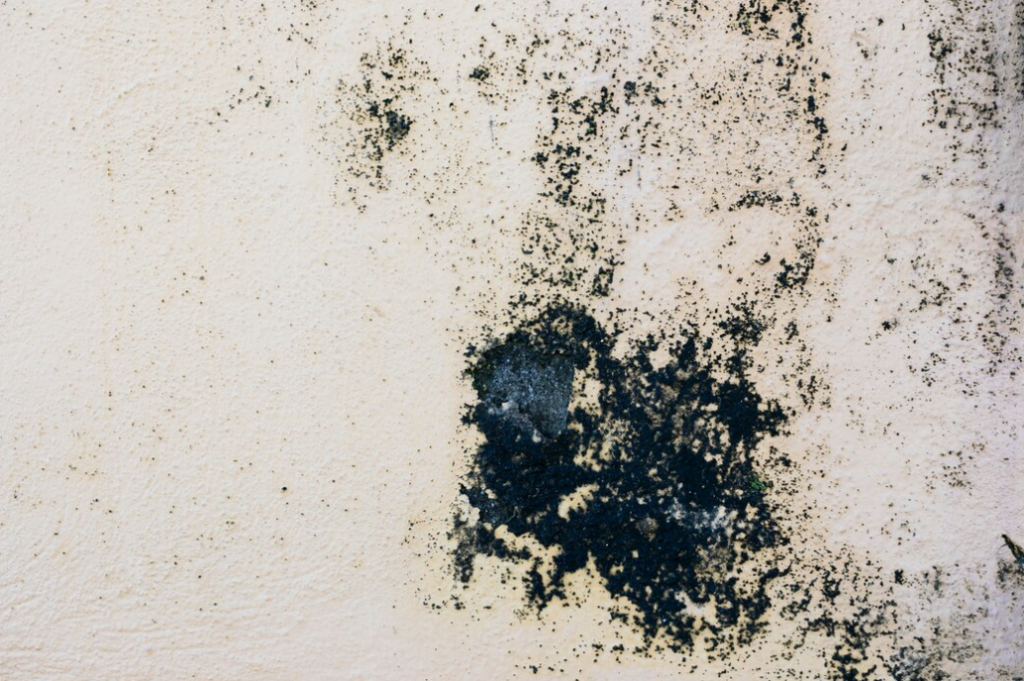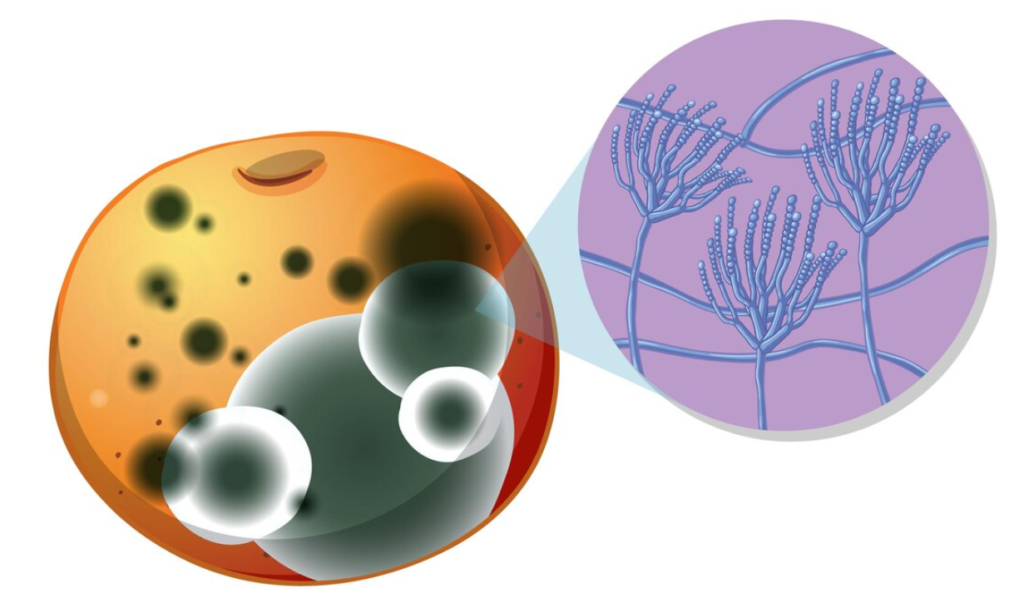Fungi are an essential part of our ecosystem. This diverse group includes yeasts, molds, and mushrooms. While mushrooms might be the most visually familiar, mold is arguably the type most commonly encountered in our daily lives, especially within our homes. This article delves into the world of fungi, focusing primarily on mold, its ecological importance, and its health implications.
Differences Between Fungi and Mold
To truly appreciate the vast world of microscopic organisms, one must first understand the distinctions between fungi and mold. Both are intrinsically related, yet they maintain specific differences that set them apart.
- Fungi: Embarking on a journey through the fungal kingdom, one encounters a plethora of species, ranging from molds, and yeasts, to the more familiar mushrooms. The fascinating world of fungi is defined by their complex cellular structures. Unlike plants, fungi don’t photosynthesize. Instead, they play a pivotal role in the ecosystem by reproducing through spores. These spores can be seen as tiny particles that are often responsible for their rapid spread. A unique characteristic of fungi is their ability to acquire nutrients. They do this through a process of absorption, often acting as nature’s recyclers by breaking down organic matter. This decomposition process is essential for the ecosystem as it helps in returning vital nutrients to the soil;
- Mold: Diving deeper into the fungal realm, we encounter mold – a subset of fungi that has its own unique characteristics. Visually, molds can be identified by their fuzzy or sometimes slimy patches. These can manifest in a variety of colors, each indicative of its species. The ideal playground for molds is a warm, moist environment. Places like bathrooms, damp basements, or even that forgotten loaf of bread in the kitchen can become mold’s haven. Molds have a peculiar way of reproduction. They release tiny, almost invisible spores into the air. These spores, when they find the right conditions, can colonize and spread rapidly.
The Ecological Importance of Fungi and Mold
Fungi, with molds as one of its diverse members, undeniably hold an indispensable role within our environment. Their interactions and contributions to the ecosystem might be less visible to the naked eye but are profound in their impact.
- Decomposition: One of the most crucial roles fungi, especially molds, play in nature is that of decomposers. These organisms are tirelessly at work, breaking down a myriad of dead organic matter — from the subtle fallen leaves that blanket the forest floor to the bodies of deceased animals. This decomposition isn’t just about disintegration. It’s a transformational process. As these materials are broken down, essential nutrients are released back into the soil. This nutrient cycling ensures that plants have access to the vital compounds they need for growth, completing nature’s intricate cycle of life, death, and rebirth;
- Mycorrhizal Relationships: Venturing beneath the soil’s surface, one would find a vast network of connections, most of which are facilitated by fungi. A significant portion of these fungi form symbiotic relationships with plants, known as mycorrhizae. This relationship is not just a fleeting connection but a deeply mutualistic one. Plants, through this alliance, gain access to nutrients, particularly phosphorus, that might be otherwise hard to obtain. In return, fungi receive carbohydrates, the energy they need to thrive. This partnership emphasizes the interconnectedness of life and how organisms, no matter how big or small, rely on each other for survival;
- Food Source: The ecological importance of fungi extends beyond the soil and plants. They form an essential part of the food chain. Various animals and insects, from beetles navigating the undergrowth to flies buzzing through the air, depend on fungi as their primary or supplementary food source. This reliance highlights fungi’s role in sustaining biodiversity and maintaining balance within ecosystems.
Health Implications of Mold Exposure

The dichotomy of mold is evident when its ecological contributions are weighed against the potential health issues it can cause, especially when it proliferates within our living spaces.
- Allergies: Mold, for many individuals, can be an invisible adversary. Numerous people exhibit allergic reactions to mold spores even if they don’t see visible signs of mold around them. Such exposure can manifest in a range of symptoms. These can be as mild as sneezing or a runny nose, but they can escalate to more severe signs such as postnasal drip, incessant coughing, and incessant itching of the eyes, nose, and throat. For those sensitive to mold, even a short duration of exposure can trigger these symptoms, making it imperative to address mold issues promptly;
- Asthma: The relationship between mold and asthma is particularly concerning. Those diagnosed with asthma often find that mold acts as a potent trigger, leading to exacerbated symptoms and, in some cases, severe asthma attacks. The tiny spores, when inhaled, can irritate the bronchial passages, leading to increased inflammation and breathing difficulties for asthma patients;
- Toxic Mold: The term “toxic mold” has become synonymous with fear, especially among homeowners. Certain molds, like the infamous “black mold” or Stachybotrys chartarum, produce mycotoxins — toxic substances that can be detrimental when they come into contact with the skin, are ingested, or inhaled. While “black mold” often takes the limelight due to its notorious reputation, it’s pivotal to understand that color is not a definitive indicator of toxicity. Hence, not all black molds are toxic, but any mold growth indoors should be addressed with caution;
- Infections: Beyond the common allergic reactions and asthma triggers, molds can pose a more sinister threat. Some molds, particularly in the right conditions, can lead to fungal infections. While these instances are relatively rare, individuals with compromised immune systems — be it from medical treatments, existing health conditions, or other factors — are at a heightened risk. These infections can range from superficial skin conditions to more severe systemic infections.
Tips to Prevent Mold Growth in Homes

Considering the potential health risks, it’s essential to prevent mold growth indoors:
- Control Humidity: A leading factor facilitating mold growth is elevated humidity levels. It’s recommended to maintain indoor humidity levels below 60%. In regions or seasons where humidity levels soar, consider investing in a good-quality dehumidifier. These are particularly beneficial in areas of the home that naturally tend to be more humid, such as basements, where stagnant air can trap moisture;
- Optimal Ventilation: Every home needs to breathe, and this becomes paramount in rooms that are frequently exposed to moisture. Bathrooms, where steam from showers can accumulate, kitchens, where cooking can release moisture, and laundry areas, are all potential mold hotspots. Ensure that these areas are equipped with exhaust fans to expel moist air outside. On pleasant days, open windows to allow cross-ventilation, aiding in the natural drying process and the expulsion of stale, damp air;
- Swiftly Address Leaks: Water damage, in any form, can rapidly become a breeding ground for mold. Leaks, be it from damaged roofing, faulty windows, or compromised plumbing, need to be addressed with urgency. Regular inspections and maintenance can preemptively identify potential issues, and timely repairs can prevent mold infestation from taking root;
- Clean and Dry Protocol: In the unfortunate event of flooding or significant water damage, it’s crucial to act quickly. All affected areas should be cleaned and dried thoroughly within a 24-48 hour window. This might involve removing water-logged carpets, drying out soaked furniture, or even employing commercial drying equipment. The aim is to eliminate any lingering moisture that can be a haven for mold spores;
- Selecting the Right Materials: When renovating or even during regular maintenance, consider the incorporation of mold-resistant products. There are paints, tiles, and other building materials that are designed to resist mold growth. Especially in areas of the home that are prone to moisture exposure, like bathrooms or basements, these products can act as an additional layer of defense against mold.
Conclusion
Fungi, with mold as one of its most recognized members, are a testament to nature’s incredible diversity and adaptability. Their role in our ecosystem is undeniable. However, when they intrude into our living spaces, it’s crucial to be aware of the potential health risks and take steps to mitigate their growth. By understanding the balance between their ecological importance and their health implications, we can coexist with these fascinating organisms in harmony. You may also like the article about fungal interaction with prokaryotic organisms to further delve into the intriguing world of microorganisms and explore the relationships between different forms of life.

